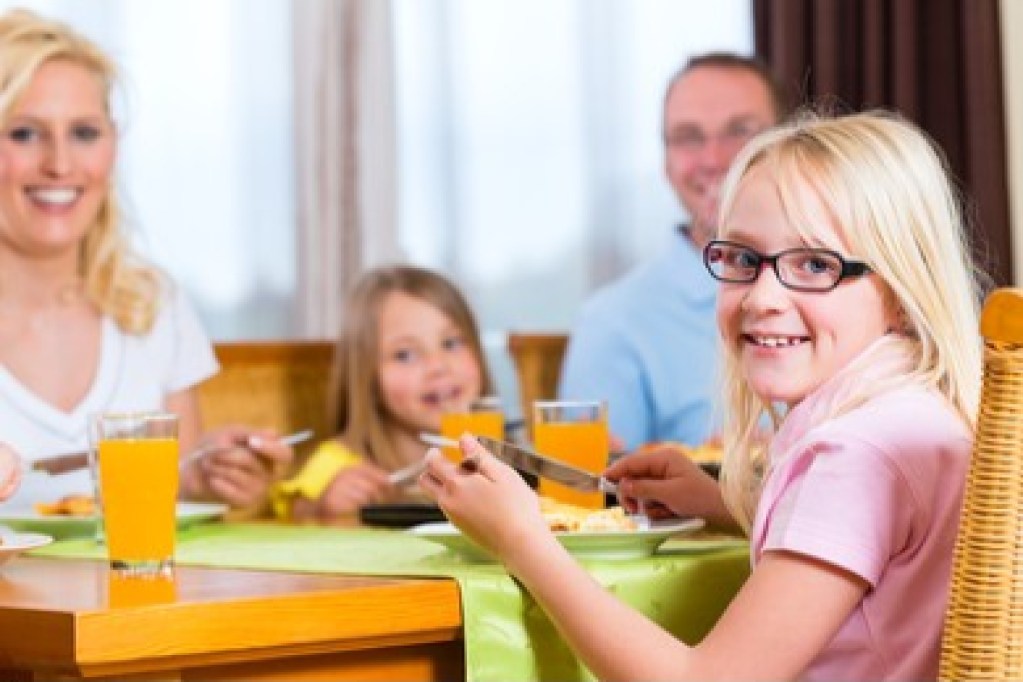For more than a few families, mealtime should come with a trigger warning. Whether they’re teens or toddlers, instilling good manners at the table can be an exercise in frustration (or futility). Good table manners take time and work. What feels like second nature to adults is still relatively new, novel, or just plain stifling to children. That’s why you are in a position to serve as not just an instructor, but a role model.
How can you raise paragons of angelic bread-breaking behavior? There are lots of tips and approaches that may take some practice, but they’re fairly easy to incorporate into everyday routines.

What do good manners look like to you?
First things first: Define your terms.
If you’re relying too much on a case-by-case approach, you may run the risk of confusing your children or undermining yourself. There are a number of potential behaviors you could focus on with your kids. Figure out what you want to enforce, communicate that clearly to all parties involved, and stay consistent.
Be a role model
Make no mistake: Your kids are watching you. Whether the children are older or younger, parents and guardians lead by example.
Do you sometimes forget to say “please?” Do you catch yourself with your elbows on the table?
You may choose to alter your own behavior to stay consistent with the rules you’ve set, or you may decide not to enforce a given behavior if you don’t see it as a deal breaker in your household. That’s up to you and each situation.

Table manners for younger kids
There’s no better time to start than early in life. Cementing good behavior into their brains from a very young age helps set good precedents from the outset.
Some specific potential manners to instill in your youngsters include:
- Wash your hands before mealtime.
- Share with others.
- Say “please” and “thank you” when requesting and receiving items from the table.
- Sit up straight and remain in your seat unless given permission to leave.
- Keep your elbows off the table.
- Chew with your mouth closed.
- Don’t talk while chewing.
- Avoid loud bodily noises.
Remember to model these behaviors as well, and make sure your spouse or partner is aware of the new rules so they can join in demonstrating and enforcing them as necessary.

Mealtime manners for older kids
It’s no secret that older kids, broadly speaking, are not exactly the most etiquette-conscious segment of the population. That doesn’t mean they can’t learn how to behave better at the table.
In addition to those noted above, options that might work best for older kids include:
- Put away screens before coming to the table.
- Don’t start eating until everyone else is ready.
- Thank your hosts and be gracious and complimentary about the meal.
- Socialize with other people at the table.
- Help clear the table.
Mealtime goes a lot smoother when everyone’s observing a few “rules of the table.” Get your kids to put the burping and slurping aside and embrace sophistication. Deep down, all kids just want to be adults. No matter their age, good table manners get them one step closer.



